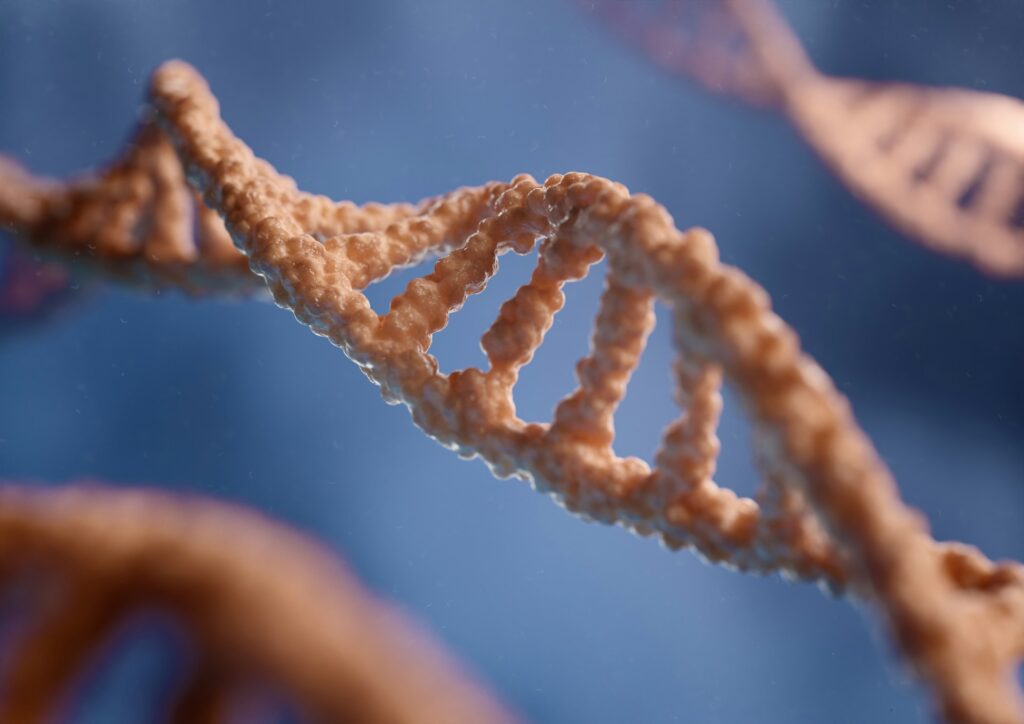A Deep Look at What Is the Role of Environmental Factors in Addiction

Addiction is a chronic and relapsing condition that touches not only individuals but also their families and communities. People often wonder what is the role of environmental factors in addiction, and the answer is clear: surroundings can either protect against risk or make substance use more likely. Genetics may account for 40–60% of vulnerability, but daily experiences, stress, and access to care explain the rest. Families looking for supportive environments often turn to trusted detox centers in San Fernando Valley, where stability and compassion set the stage for healing. This article takes a deep look at how environments shape addiction across life stages, how they interact with genetic vulnerability, and why creating protective settings is essential for both prevention and recovery.
What Makes Addiction a Balance Between Genetics and Environment?
The relationship between genetics and environment in addiction is not a simple either/or. Genes set the baseline, but the environment decides how that risk develops.

What Do Genetics Contribute to Addiction Risk?
Genetics create a baseline of vulnerability, but they are not destiny. Heritability for substance use disorders ranges from 40% to 60%, showing that traits like dopamine response and stress regulation shape risk. Yet many people with high genetic load avoid addiction, which raises the question of what is the role of environmental factors in addiction. Supportive settings, including programs such as group therapy for addiction treatment, can buffer genetic risk by strengthening coping skills and reducing isolation. Others with the same DNA struggle when negative environments push that vulnerability toward substance use.
How Do Environmental Stressors Shape Genetic Vulnerability?
Environmental stressors can alter how genes express themselves through epigenetic changes. Trauma, chronic stress, or early exposure to substances may amplify genetic risk, while supportive conditions can suppress it. This explains why two people with the same predisposition can lead very different lives depending on their surroundings. When asking what is the role of environmental factors in addiction, the answer often lies in how environments either intensify or protect against genetic vulnerability. Supportive approaches like individual therapy for addiction treatment help people counteract these risks by addressing stress responses and building healthier coping mechanisms.
What Are the Main Environmental Factors in Addiction?
Environmental influences go far beyond a person’s immediate surroundings. They include social structures, economic conditions, and even government policy. When families ask what shapes outcomes, they must think about several layers. Family structure and parenting practices matter, since a child who grows up in a supportive and consistent household has less risk. Peer groups and school climate shape behaviors during critical years. Employment and financial stability influence stress and access to care.

Neighborhood conditions, exposure to violence, and the density of outlets that sell alcohol or drugs create pressure points. Media and marketing normalize use or glamorize risky behavior. Finally, laws, policies, and the healthcare system either protect people or expose them further. Together, these environmental factors in addiction explain why prevention and recovery require community effort as much as individual responsibility.
- Family structure and parenting practices
- Peer groups and school environments
- Employment and financial stability
- Neighborhood conditions and safety
- Media and marketing exposure
- Laws, policy, and access to healthcare
How Do Early Life Experiences Shape Addiction Risk?
Childhood experiences build the foundation for resilience or vulnerability. The first years of life influence how the brain manages stress, how rewards are processed, and how coping skills develop. Families and caregivers often wonder why some children develop strong self-control while others struggle. The answer often lies in the early environment.
What Role Do Childhood Adversities Play?
Adverse childhood experiences such as abuse, neglect, or household instability increase later risk for addiction in a dose–response fashion. The more ACEs a child accumulates, the higher the chance of substance misuse later in life. These experiences alter stress responses and leave lasting marks on brain circuits that govern self-control and reward. Children who face adversity without protective buffers often grow up seeing substances as a way to manage pain. This is why early prevention and safe environments are critical. Families exploring group therapy for addiction treatment often learn that many adult clients trace their difficulties back to early trauma.

How Do Family Dynamics Protect or Harm Children?
Family structure plays a large role. Consistent rules, emotional warmth, and parental monitoring act as shields. In contrast, homes where parents misuse substances, where supervision is absent, or where conflict dominates create risk. Children model what they see, and if they observe substance use as a coping strategy, they are more likely to repeat it. On the other hand, families that create safe and nurturing routines give children skills to face stress without substances.
Why Is Adolescence Such a Critical Period for Risk?
Adolescence is a time of exploration, but also of heightened vulnerability. The brain is still developing, especially in areas of judgment and impulse control. Peer approval becomes central, and risk-taking behaviors increase. For many, this is when the first experiment with alcohol, cannabis, or nicotine occurs.
How Does School Connectedness Protect Teens?
When students feel supported at school, have mentors, and experience belonging, they are less likely to experiment with substances. School connectedness builds resilience and helps buffer against outside influences. In contrast, bullying, social exclusion, or chronic truancy weaken protective layers and open doors to risky behaviors. Adolescents who feel isolated often turn to substances for relief. Parents who seek individual therapy for addiction treatment for their teens often discover that academic struggles and social disconnect were early warning signs.
How Do Peers Influence Substance Use?
Peers are powerful during adolescence. Friends who drink or use drugs create norms that make experimentation appear normal or even expected. Peer modeling can override parental guidance during this stage. Teens are especially susceptible to immediate social rewards, and substance use often fits into that picture. That is why prevention must address not only the family but also the peer group environment.
How Does Young Adulthood Increase Exposure to Risk?
Young adulthood brings independence, but also new stressors and opportunities for exposure. As people move to college, workplaces, or independent living, environments become powerful drivers of behavior.

What Role Do Availability and Accessibility Play?
The density of alcohol outlets, vaping shops, or relaxed local cannabis laws matters. When substances are easily available, experimentation is more common. Communities with higher outlet density also report higher levels of misuse. For someone vulnerable, simple access can make relapse more likely. It is no surprise that many clients entering outpatient drug rehab in Los Angeles describe how constant exposure to availability in their neighborhoods influenced use.
How Do College and Workplace Cultures Encourage Risk?
Environments that glorify binge drinking or use substances as stress relief create fertile ground for misuse. College campuses with heavy drinking cultures show higher addiction rates. Workplaces that normalize “work hard, play hard” mentalities add pressure. On the other hand, supportive workplaces that encourage wellness reduce risk. Culture matters because it sets expectations for behavior.
How Do Neighborhoods and Communities Shape Addiction?
Where someone lives strongly influences their risk. Neighborhoods are not just physical spaces; they are emotional and social ecosystems.
Why Does Disadvantage Increase Addiction Risk?
Communities facing poverty, violence, or instability expose residents to chronic stress. Stress hormones remain elevated, and substances often become a means of relief. Higher crime rates also correlate with greater substance misuse. The connection between disadvantage and addiction is not accidental; it is the result of continuous stress and limited support. For many, entering outpatient rehab San Fernando Valley provides the stability missing in their neighborhoods.
How Do Social Ties Protect Against Misuse?
Communities with strong social bonds act as protective buffers. When neighbors know and support one another, when local groups provide accessible resources, and when safe public spaces are available, substance misuse becomes less likely. Recovery also strengthens in these environments because accountability and encouragement are built into daily life. In discussing what is the role of environmental factors in addiction, social ties clearly show how positive connections can reduce risk and promote long-term stability.

How Do Policy, Marketing, and Media Shape Risk?
Addiction risk is not only personal; it is influenced by national policy and corporate messaging.
How Do Availability and Pricing Affect Use?
When alcohol taxes rise, consumption falls. When age checks or retail restrictions limit access to cigarettes, use declines. Policy creates friction that reduces impulsive use. Communities that regulate cannabis outlets see fewer youth exposures. These are clear examples of how the environment interacts with behavior. Families who connect with outpatient alcohol rehab Los Angeles often note that relapse is harder to resist when substances are cheap and available everywhere.
How Does Marketing Target Youth?
Advertising plays directly on the vulnerabilities of young people. Campaigns that glamorize e-cigarettes, alcohol, or cannabis increase experimentation. Social media adds another layer, with influencers normalizing risky behaviors. Exposure shapes what feels normal, and what feels normal often becomes behavior.
How Do Environmental Factors Support Recovery?
Recovery is not only willpower or medication. It is also creating conditions where change is possible. Stability, support, and access matter as much as motivation.
Why Are Housing and Employment So Critical?
Safe housing provides stability, and employment offers structure and purpose. Individuals who have these supports relapse less often. On the other hand, homelessness or unemployment add layers of stress that trigger use. Clients who seek cocaine withdrawal in Los Angeles often find that housing support becomes as important as detox medications.
How Do Social Networks Encourage Recovery?
Peer recovery groups and family therapy make recovery more sustainable by creating accountability, encouragement, and connection. People heal best when they feel supported, and communities that promote openness help reduce stigma. When considering what is the role of environmental factors in addiction, social networks stand out as one of the most powerful protective influences. Supportive relationships give individuals reasons to stay sober and reinforce the belief that lasting recovery is possible.
How Do Healthcare Barriers Delay Healing?
Access to treatment can be blocked by cost, lack of services, or stigma. Many people avoid help because they fear judgment. Recovery improves when treatment is accessible, affordable, and compassionate. Families searching for drug rehab centers in Los Angeles CA, often learn that the right environment makes professional care far more effective.

What Mechanisms Link Environment and Addiction?
The environment influences addiction through several biological and psychological pathways. Stress increases allostatic load, weakening self-control. Conditioned learning ties environments and cues to cravings, so walking past a bar or seeing old friends can trigger relapse. Easy availability reduces barriers, making impulsive use more likely. Social norms signal what behaviors are acceptable, and stigma keeps people from seeking help. Each of these mechanisms explains why addressing environment is as important as addressing biology in treatment.
- Stress and allostatic load
- Conditioned learning and environmental cues
- Easy availability and access to substances
- Social norms that set behavioral expectations
- Stigma that reduces help-seeking
What Protective Environments Can Reduce Risk?
Not all environments increase risk. Many act as protective buffers. Families who participate in prevention programs see measurable reductions in youth substance use. Parenting programs that strengthen monitoring and communication reduce initiation. Schools and community centers that offer after-school programs, mentoring, and prevention campaigns build resilience. Policy also protects populations. Higher prices, outlet restrictions, and marketing limits all reduce overall use. These protective layers highlight why prevention is possible and why the environment must be part of every treatment plan.
- Family and parenting programs that strengthen monitoring
- School and community initiatives with mentoring and prevention campaigns
- Policies that regulate outlet density, increase prices, and restrict marketing
How Do Genes and Environment Interact Over Time?
Genetics set the stage, but environment writes the script. Epigenetics shows that experiences can alter gene expression, meaning life events can make vulnerability stronger or weaker. This dynamic interaction explains why no two individuals experience addiction in the same way. One person may carry genetic risk but live in a supportive environment and avoid addiction, while another with the same risk succumbs under pressure. Recognizing this interaction makes prevention and treatment more precise, since both biology and environment must be addressed.
What Is the Role of Environmental Factors in Addiction in the End?
Addiction is never explained by genetics alone. It is shaped as much by the spaces people live in, the policies that govern them, and the relationships that sustain them. When families and loved ones ask what is the role of environmental factors in addiction, the answer is clear: environment amplifies or protects against genetic vulnerability. Prevention works best when families, schools, communities, and governments create protective surroundings. Recovery lasts longer when individuals find safe housing, employment, supportive peers, and compassionate healthcare. For addicts and their loved ones, this means hope is never out of reach. With the right conditions, healing is possible and sustainable. Contact us today to learn how our center can provide the supportive environment needed for lasting recovery.
You Have Questions
We Have Answers
At Tranquility Recovery Center, we offer treatment for a wide range of addictions, including alcohol, opioids, prescription drugs, and illicit substances. Our team tailors each program to meet individual needs, focusing on both the physical and emotional aspects of recovery.
At Tranquility Recovery Center, we offer treatment for a wide range of addictions, including alcohol, opioids, prescription drugs, and illicit substances. Our team tailors each program to meet individual needs, focusing on both the physical and emotional aspects of recovery.
At Tranquility Recovery Center, we offer treatment for a wide range of addictions, including alcohol, opioids, prescription drugs, and illicit substances. Our team tailors each program to meet individual needs, focusing on both the physical and emotional aspects of recovery.